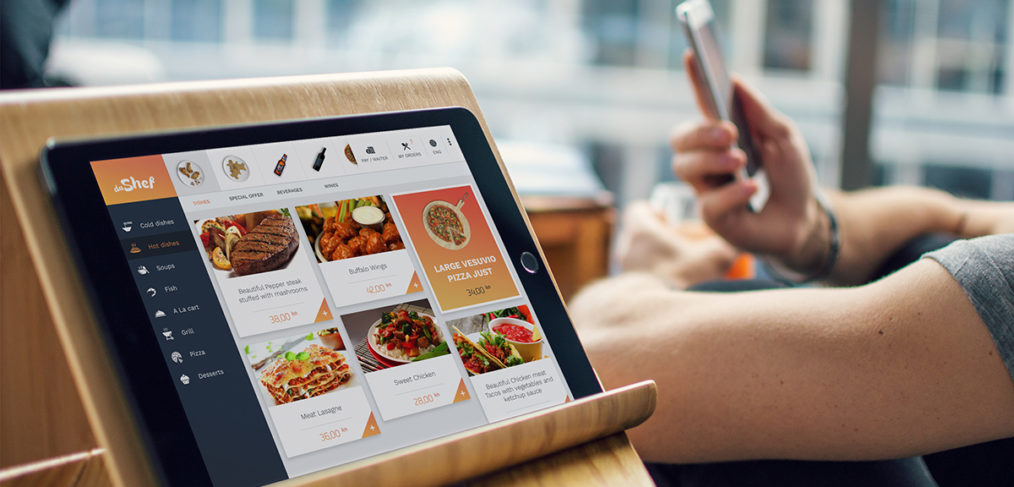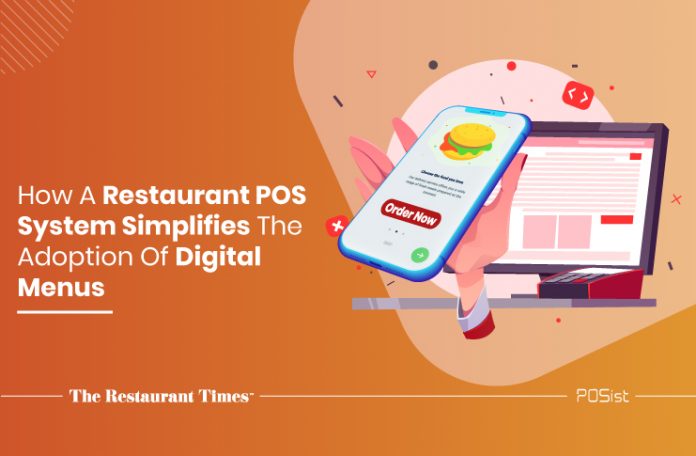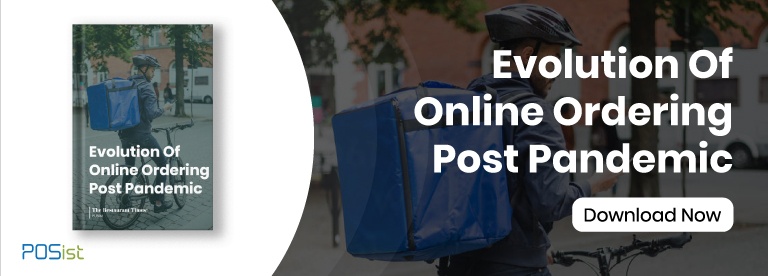Digital menus are the menus that are presented to customers as soft-copy. They are visible on a screen and generally give them the option to order online. They can be accessed via QR codes, websites, or mobile apps directly by the customers without any assistance from the restaurant staff. The orders are instantly accepted and sent to the kitchen. With such simplicity, you would not need waiters to manually take orders and direct them to the kitchen.
Digital menus, in today’s world, have great importance. In the new normal, where everyone is sceptical about dining out due to a high number of touchpoints, digital menus seem to be one of the plausible solutions. In the wake of COVID-19 and advancing technology, digital menus are now replacing conventional menu cards owing to the numerous advantages that they bring along. They are cheaper, reduce staff effort, reduce wait time for customers, eliminate long queues of customers, etc.
7 Ways Restaurant POS Facilitate Easy Adoption Of Digital Menus
The QSR industry adopted digital menus long back. Prominent brands like McDonald’s, Burger King, KFC, Dominos, etc., have been displaying their menu on big screens to make it easier for the customers to choose their order. Since then, digital menus have seen widespread adoption by restaurants. Dine-in restaurants have started offering their menu on customer’s mobiles and tablets with the assistance of POS software.
Let us see how a robust restaurant POS system can simplify the adoption of digital menus for restaurants.
1. Manifest A Detailed Menu
A POS software enables you to display a detailed menu to your customers with detailed information about the ingredients used, nutritional value, and the process of preparation. There are a lot of instances when customers ask for specific attributes of a dish that they are about to order and the waiter has to send the manager to convey the information to the customers. Digital menus solve this problem by providing detailed descriptions to the customers and solve all their doubts about the items they are looking to order.
A detailed menu can be divided into categories and subcategories with the help of POS software. This makes the menu easy to navigate with a user-friendly interface. Customers can directly choose the category and sub-category which they want to order from, instead of surfing through the entire menu. All these factors contribute to a better customer experience and save a lot of time.
2. Customize The Menu
Implementing a digital menu through POS software gives you many additional advantages. Customizing the menu is one such advantage. Digital menus give customers the option to add special flavours, sides, etc., to their dishes. In addition to this, customers also have the liberty to choose their own ingredients, for instance, what kind of bread do they want for their burgers, what sauce would they like to include, etc.

3. Send Notifications To Customers
A digital menu implemented through POS software lets you send notifications to your customers. You can leverage this to promote the latest specials on the menu.
Since POS are capable of storing customer data centrally, you already have access to data such as birthdays, marriage anniversaries, and other special events. You can gain insights from this customer data and dish out discounts, offers, and coupons on their special days. Furthermore, you can also dole out updates about any upcoming events that your business might participate in.
4. Make Instant Updates
Being a restaurateur, it is essential for you to have access to business data from anywhere in the world. With digital menus, not only can you view your restaurant menu from anywhere, at any point in time, and with any internet-enabled device, you can also introduce instant updates to it. Just one click and the whole menu is changed across all outlets instantly.
You can update your breakfast, lunch and dinner menu seamlessly. You can introduce specials like dish of the day, season specials, etc. items on the menu with ease. All of this is possible when you switch to digital menus using POS software.
5. Get Feedback
Getting feedback from clients or customers is a crucial part of any business. When it comes to restaurant businesses, feedback becomes highly essential to know if your business is performing well. With a digital menu, you can also get feedback from your patrons by adding feedback forms that can be used to rate the restaurant services, items, ambience, etc. This makes them feel valued, thereby enhancing the customer experience.
6. Track Real-time Data
Tracking sales data is extremely crucial for a restaurant business. A digital menu incorporated with the assistance of POS software helps to track the performance of the most popular dishes of the week and month. With such data in hand, you can easily analyze the best sellers of each outlet, and then put those best sellers in the recommended section of the digital menu.
In addition, real-time data also helps to keep the inventory in check. You can forecast future demand and make sure that your kitchen never runs out of inventory. With a proper analysis of your outlet’s received orders, you can determine the exact amount of inventory required for future orders. This will not only help you keep up with inventory levels but also reduce wastage in your restaurant’s kitchen.
7. Choose Your Currency
A POS software lets you choose the currency in which you want your menu to be displayed. This makes it easier to manage the menus of multiple restaurant branches present in different countries with different currencies.
Digital menus are here to stay, especially after the pandemic. In 2021, contactless ordering has opened the gates to new innovations in which menus can be manifested. It is highly recommended that you roll with the change and consider shifting to digital menus. If you’re looking to make the adoption process easier and get multiple benefits along with it, you must introduce efficient POS software to your restaurant business.


















